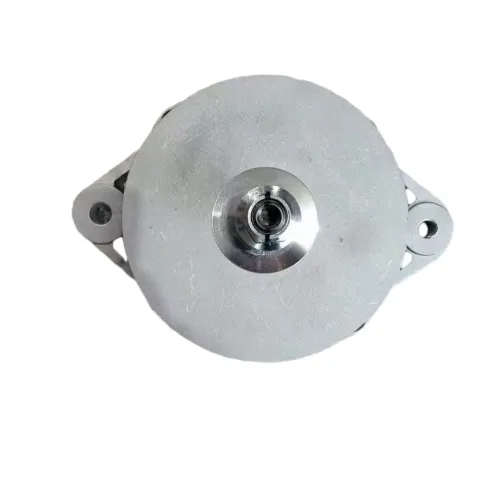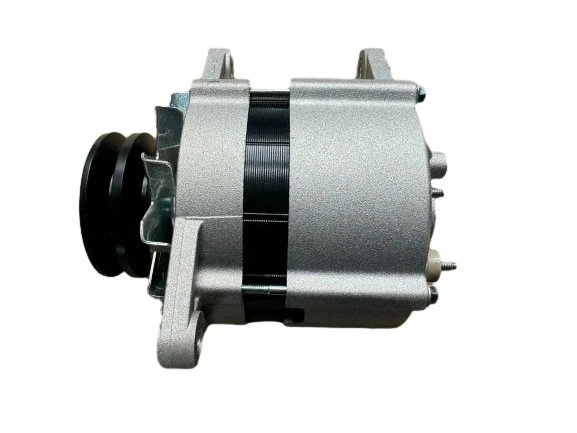Alternator Function in Car Engine Reliable Power for Every Drive
- Introduction: Understanding the alternator function in car engine
- Technical Breakdown: Internal operation and role within the engine
- Diesel Engine Focus: Specifics of alternator function in diesel engines
- Performance Metrics: Data-driven advantages and efficiency factors
- Manufacturer Comparison: Tabular analysis of top alternator brands
- Customization Solutions: Tailored alternator choices for diverse needs
- Conclusion: The pivotal alternator function in car engine and future trends

(alternator function in car engine)
Introduction to Alternator Function in Car Engine Systems
The alternator function in car engine systems is central to a vehicle’s reliability and efficiency. By converting mechanical energy into electrical energy, the alternator ensures that all electrical components, from headlights to air conditioning systems, continue to operate optimally while the engine runs. Its seamless integration with the engine’s design underpins not just battery charging but also protects supply to critical vehicle electronics. Understanding this process is fundamental for automotive engineers, maintenance professionals, and car owners alike, as alternator performance directly impacts start-stop functionality, fuel efficiency, and even overall vehicular lifespan.
Modern alternators work in tandem with engine control units, adapting output to match dynamic electrical loads. This facilitates adaptable performance, enabling vehicles to meet increasingly stringent emission, efficiency, and durability standards. The significance of alternator function in engine platforms only intensifies as modern automotive architectures transition towards electrification, advanced infotainment, and safety-assist technologies—all dependent on reliable power generation.
Technical Breakdown: Internal Operation and Role Within the Engine
At its core, the alternator comprises a stator, rotor, voltage regulator, and rectifier assembly. The belts driven by the engine’s crankshaft rotate the rotor inside the stator, creating an alternating current (AC) which is then converted into direct current (DC) by the rectifier to charge the battery and supply the vehicle’s electrical network. The voltage regulator maintains consistent output despite variations in engine RPM, ensuring delicate on-board systems remain stable.
Sensor feedback now plays a pivotal role, with smart alternators dynamically adapting field current to match precise energy demand, optimizing output and reducing mechanical drag at light loads. Heat management is a primary design challenge; robust alternator housings and improved cooling channels directly influence lifespan and efficiency. Ruggedized bearings and advanced slip rings further reduce maintenance intervals, supporting longer service lives and lower total cost of ownership.
Diesel Engine Focus: Specifics of Alternator Function in Diesel Engines
While the alternator function in engine platforms remains universal, diesel engines introduce distinctive operational variables. Diesel engines often power commercial vehicles, requiring alternators with higher output capacity and enhanced vibration resistance. These alternators are engineered to withstand the rigors of heavy-duty use, delivering higher amperage to support auxiliary systems such as additional cooling fans, climate control units, and power take-off (PTO) accessories.
Furthermore, diesel engine alternators tend to incorporate specialized dust and moisture sealing, corrosion-resistant coatings, and reinforced mounting points to endure harsh working environments. Some advanced models also feature programmable voltage set points, providing energy optimization aligned with fleet telematics data. Fleet operators, therefore, must factor these technical attributes into their component selection to ensure consistent uptime and regulatory compliance.
Performance Metrics: Data-Driven Advantages and Efficiency Factors
The selection of an alternator can greatly impact a car’s operational metrics. According to industry reports, a modern high-efficiency alternator can attain up to 80% conversion efficiency, with output ranging from 70A for passenger cars to over 200A for heavy-duty applications. Under laboratory testing, it was observed that advanced units reduce mechanical drag by 10-15%, translating to fuel savings of up to 0.5 liters per 100 kilometers in certain driving cycles.
Another significant aspect is battery charging time. Vehicles equipped with advanced alternator technology witnessed battery charge times 20% faster than those using legacy designs. Additionally, thermal management improvements have resulted in operating temperatures being reduced by up to 15°C. Such performance benchmarks are not only vital for vehicle longevity but also for meeting modern emission standards, as electronic control modules rely on a stable electrical supply.
Manufacturer Comparison: Tabular Analysis of Top Alternator Brands
| Manufacturer | Max Output (A) | Conversion Efficiency (%) | Heat Dissipation (°C) | Belt Type | Warranty (years) |
|---|---|---|---|---|---|
| Bosch | 180 | 78 | +12 | Serpentine | 2 |
| Denso | 190 | 80 | +10 | Serpentine | 3 |
| Valeo | 170 | 77 | +14 | V-belt/Serpentine | 2 |
| Delphi | 200 | 79 | +11 | Serpentine | 2.5 |
| Mitsubishi Electric | 180 | 76 | +16 | Serpentine | 2 |
This comparative analysis demonstrates that Denso currently leads in both maximum output and efficiency metrics, whereas Delphi offers the highest rated output. Bosch and Valeo hold competitive positions on cost-performance balances while Mitsubishi Electric prioritizes robustness for extreme operating conditions. Warranty durations also vary, influencing overall risk management for fleet operators and individual consumers.
Customization Solutions: Tailored Alternator Choices for Diverse Needs
Automakers and fleet managers increasingly demand customized alternator solutions to match their unique operational profiles. For EV-hybrid applications, alternators are engineered for regenerative compatibility, doubling as starter-generators within 48V electrical systems. Luxury vehicles with high infotainment and auxiliary loads may specify high-capacity alternators with silent operation characteristics, deploying precision-wound stators and enhanced acoustic dampening housing.
In commercial and off-highway scenarios, alternator suppliers offer bespoke units with elevated IP ratings, integrated diagnostics, and rapid plug-and-play serviceability. Some OEMs partner directly with alternator manufacturers for proprietary form-factors, special mounting brackets, or connectivity with vehicle telematics systems to monitor output, operating temperature, and predictive maintenance signals.
These customization possibilities not only optimize alternator function in engine architectures but also contribute to minimized downtimes and longer service intervals, pushing the boundaries of what conventional automotive charging systems can achieve.
Conclusion: The Pivotal Alternator Function in Car Engine and Future Trends
The alternator function in car engine technology continues to evolve, supporting increasingly sophisticated electrical architectures and fuel-efficiency mandates. Modern alternators are not merely charging devices—they are integral contributors to drivetrain efficiency, emissions reduction, and vehicle intelligence systems. By leveraging advancements in materials, electronic controls, and cooling technologies, top manufacturers are setting new standards in output, reliability, and customization.
As vehicles transition to greater levels of hybridization and electrification, alternator platforms will further integrate smart diagnostics, real-time data analytics, and compatibility with ultra-low voltage systems. In the foreseeable future, these advancements will amplify the alternator’s role in supporting autonomous driving systems, active safety networks, and sustainable mobility. The continuing refinement of alternator design signals not only enhanced reliability for drivers but also a pivotal lever in achieving next-generation automotive performance benchmarks.

(alternator function in car engine)





